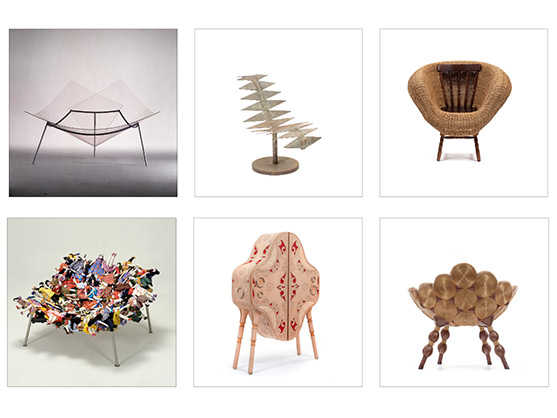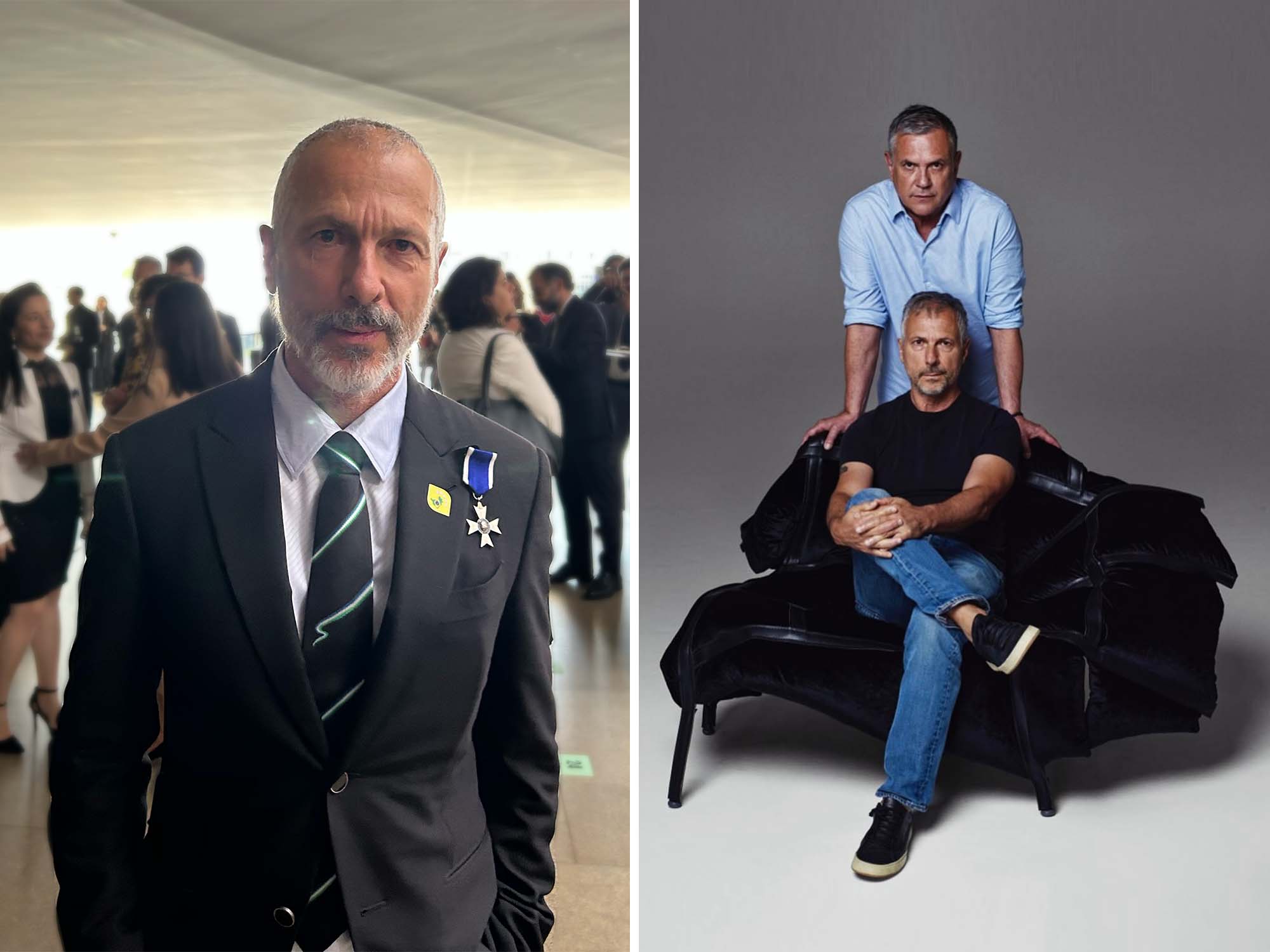Centre Pompidou Receives Landmark Acquisition from Estúdio Campana: The Largest Acquisition of Works by a Living Designer in the Institution’s History
The Instituto Campana, in collaboration with their gallery Friedman Benda and the Centre Pompidou, is proud to announce a landmark initiative to preserve the legacy of Brazilian designers Fernando Campana (1961–2022) and Humberto Campana (b. 1953), cofounders of Estúdio Campana. The studio celebrated its 40th anniversary in 2024, marking four decades of groundbreaking work at the intersection of design, art, and craftsmanship.
This historic partnership includes the acqusition of approximately 70 emblematic works from the Institute Campana’s archive—home to over 6,000 pieces and documents in Brotas, São Paulo, Brazil—alongside key contributions from galleries, collectors, and long-standing partners such as Edra, Louis Vuitton, Alessi, and Bernardaud.
The relationship between Estúdio Campana and the Centre Pompidou began in 2004, with the acquisition of the iconic Vermelha (1998) and Favela (2003) chairs. Over the past two decades, this connection deepened through the participation of the Institute in exhibitions such as Face to Face: Arcimboldo (2021) and Repetition (2023) at Centre Pompidou-Metz, curated by Marie-Ange Brayer and Chiara Parisi. The collaboration culminated in the donation of two major installations: Pele (2021) and Surveillance (2021).
Curator Marie-Ange Brayer has played a pivotal role in nurturing this dialogue. In addition to featuring the Campanas’ work in key exhibitions, she also participated in the documentary We the Others, produced by the Campana Institute and Muse Factory in 2024 to celebrate the studio’s four-decade milestone.
This evolving partnership has now resulted in the most extensive acquisition of works by a living designer and the most extensive institutional collection by any design studio from the Global South. The selected works span the full depth and breadth of the studio’s practice—ranging from early prototypes to one-of-a-kind pieces and limited editions—along with 22 original sketchbooks offering an intimate insight into the Campanas’ creative process.
The acquisItion features contributions from the Instituto Campana; international design galleries Friedman Benda (USA), Carpenters Workshop Gallery (France, UK and USA), and Giustini Stagetti (Italy), as well as esteemed partners including Edra, Louis Vuitton, Alessi, and Bernardaud.
This unprecedented moment reinforces the presence of Brazilian and Latin American creativity within one of the world’s most prestigious design collections, which also includes in-depth collections of European masters such as Andrea Branzi and Ettore Sottsass.
Highlights from the Acquisition
The collection includes seminal pieces such as the Samambaia Chair (1989), Cone Chair (1997), Alligator Chair (2002), Paraíba Chair (2006), Cangaço Cabinet (2015), and Jalapão Chair (2022). Together, they form a cohesive narrative of the studio’s evolution across techniques, materials, and conceptual approaches.
Beyond furniture, the acquisition encompasses set designs from the 2008 production of Peter and the Wolf at the Guggenheim Museum, as well as sculptures crafted by Fernando Campana in 2018 using salvaged automotive parts.
Another important component of this acquisition are the 22 original sketchbooks from Fernando and Humberto Campana. These books document their creative process over the decades, featuring exploratory drawings, conceptual drafts, and early blueprints—including notes from the Desconfortáveis collection (1989) and the initial conception of the Vermelha Chair (1993).
“It is with immense joy that I received confirmation from the Centre Pompidou that a selection of Estúdio Campana’s works has been officially accepted into its permanent collection. I could never have imagined that our journey—Fernando’s and mine—would reach such a milestone. Since its founding, the Centre Pompidou has played a significant role in our lives, redefining what a cultural institution can be. Its commitment to artistic reflection and innovation has always resonated with our work, serving as both an inspiration and a reminder that there is space for new ways of experiencing and living art.
As a designer and artist, I feel deeply honored and reassured to know that Fernando’s and my legacy will be preserved with such care. More importantly, this achievement ensures that our humble contribution to design history will be shared with audiences around the world, celebrating Brazilian and Latin American creativity and artistic expression alongside the most prestigious names in the field.”
— Humberto Campana
“This acquisition represents an opportunity to preserve a unique legacy within the context of one of the world’s leading art institutions. The Centre Pompidou’s commitment to collecting leading voices in art and design in depth will ensure that generations to come will be able to access the achievements and contributions of some of the greatest creators of our time.
It has been a true honor to be part of Estúdio Campana’s innovative process for over two decades, and to be part of such an illustrious group of contributing partners.”
— Marc Benda
“Major figures in contemporary design, the Campana brothers developed a singular body of work beginning in the late 1980s. Drawing from all fields of art, they contributed to the transformation of the language of contemporary design through their practice of reuse and their animistic approach to objects. Their approach embraces the hybridization of materials and a practice of assemblage, often expressed through a baroque and exuberant aesthetic. They have embraced gesture and asserted a handcrafted dimension, transformed through the use of industrial materials. Through recycling and repurposing, they celebrated Brazil’s urban cultures while engaging with the social dynamics of their country—the ingenuity and the spontaneous formal and material expressions of the vernacular found within cities, particularly São Paulo, which they observed in everyday life.”
— Marie-Ange Brayer, curator, head of the design department, Musée national d’art moderne, Centre Pompidou










